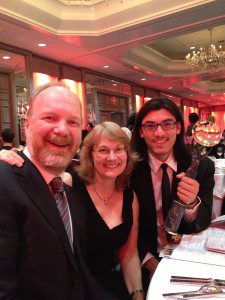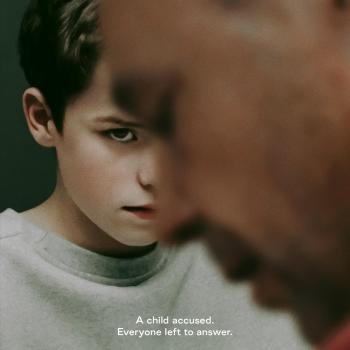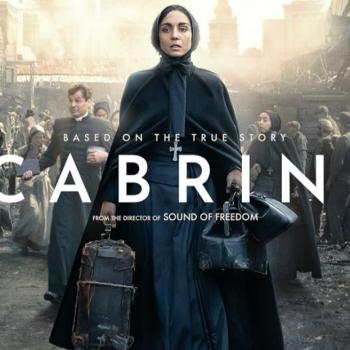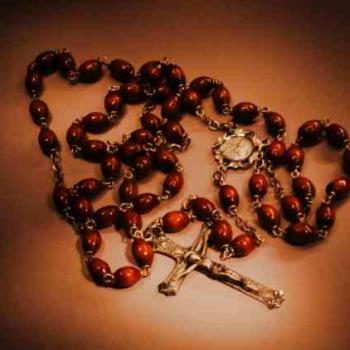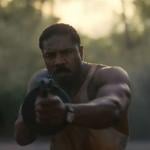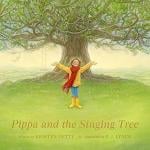
James Balog is an avid adventurer, photographer and photojournalist who was born in Pennsylvania, went to St. Joseph High School in Metuchen, New Jersey and on to Boston College. At a recent press day for his newest film “Chasing Ice” he described himself as some one who has always been interested in the intersection or “contact zones” between nature and humans. He started out photographing animals, then technology, followed by trees and then the role of human activity in climate change.
At first, Balog was a skeptic about global climate change. But he found that “the story is in the ice.”
Now Balog has spent a lot of time on the ice, however, and has become a believer. In 2005 he began to photograph and document receding glaciers for magazines such as National Geographic and he was shocked at what he saw. The ice was melting at a faster rate than anyone predicted. Two years later he founded a non-profit organization, “Extreme Ice Survey,” “where art meets science,” that today provides evidence about the effects of human activity on global warming. Through time-lapse photography Balog and his team, including director/producer Jeff Orlowski, have documented and give witness to the truth of global warming. As demonstrated in “Changing Ice”, it is scientifically unassailable.
Balog got the idea to place 4-5 cameras around glaciers in Iceland, Greenland, Alaska, and Montana (and now on Mt. Everest as well), to take pictures at set intervals, and see what would happen. “Chasing Ice” is the story of the huge challenges that Balog and the filmmakers had to deal with to photograph the beauty and grandeur of ice that “calves”, moves and melts.
Ice has always done thus but Balog said something that is at the core of his projects I think: “Nature isn’t nature anymore. We are way beyond nature’s variation.” What we have now is man-made nature.
Balog thought that all the talk about global warming was “based on hyperbole and computer models; I didn’t think tht humans were capable of changing the chemistry of the planet; it didn’t seem possible.” Then he learned the story that the glaciers were telling through ice cores extracted from deep in glaciers. They can measure carbon dioxide and scientists were able to see that “levels of carbon dioxide and melting rose and fell together. Then humans started adding carbon dioxide.”
Fifteen of the last twenty years have been the hottest on record.
At first the ice in Balog’s cameras looks gorgeous, with green and blue hues reflecting sunsets, the sky, and give off brilliant white reflection. Then through close-ups we see how black carbon, the offal of burning wild firs and fossil fuels since the advent of the Industrial Revolution (1750 AD), that pock mark the ice and causes the bottom layers to melt. The imbalance caused by melting ice contributes to harsh weather changes.
“Chasing Ice” is a fascinating documentary that reveals the speed of ice melt, how glaciers deflate and change over time, and how ice dies.
“The only thing you could really photograph to document climate change was ice” Balog explains. In “Chasing Ice” he and his team capture “ice on the run.” The changes in the Solheim Glacier Iceland exhibits huge amounts of change that are outside normal behavior.
But one of the most “magical, miraculous, scary and horrible” events was recorded at the Ilulissat Glacier in Greenland, the purported source of the iceberg the Titanic struck as it crossed the Atlantic ocean. For 75 minutes the team’s camera capture a “calving” incident the size of Manhattan, from about 34th Street to the Battery, that crashes into the ocean., the height of it 2-3 times the size of Manhattan’s building line. Then Balog explains that from 1901-2000, this glacier retreated eight miles and from 2000 – 2009 it retreated nine miles. In ten years the glacier melted more than the previous 100. The accelerated speed of the melt is nothing short of alarming and frightening.
These changes are observable, photographable and measurable. “It is tangible, visible evidence of climate change. Although the public perception may be that scientists are arguing over the reality of climate change, the fact is, science accepts climate change.
I asked Balog, who considers himself “spiritual” but not “religious”, about how his Catholic faith might have influenced his life work here. He said though he has drifted away from his Catholicism, he thinks it has conjured up positive and negative aspects of being Catholic. On the one hand, the very hard work and physical suffering one endures while documenting climate change, is a martyrdom. The positive humanist aspect of that Catholicism inspires “the value and purpose of existence and the willingness to sacrifice and to do good in celebration of that existence.”
Director Jeff Orlowski said that he was shocked to see the ice change. Then he learned patience and endurance especially form the editing process of making the film. When it was first rejected by the Sundance Festival he had to go back and put time and effort into the story and it paid off.
James Balog believes it is his role to be a witness to global climate change, “a visual voice for the changing planet” he told us journalists. He and his team do this by recording the death of the ice, “the ice with its endless beauty and variation”, and the “enduring power of the glaciers and their fragility” that go from security to “crumbling into the ocean” because of human activity.
“Chasing Ice” is a reverent, graceful, beautiful and poetic testament to the dramatic climate change taking place. He says that glaciers matter because a they are the last canaries in the mine shaft.
I wanted to see more extended sequences of dying glaciers and director Orlowski said that they hope to add these to the DVD when it comes out, possibly mid-2013. Don’t wait, however, if “Changing Ice” comes to a theater near you; we have waited too long already to act and to be “part of the change we want to see in the world” (cf. Gandhi).
Balog explained that there is nothing we can do to reclaim what we have lost through the ice but we have the power to change the way we live and use the planet, for the good of this generation and generations to come.
“Changing Ice” is a perfect film for Earth Day, environmental studies, geology, and anyone wanting to understand better one of the core principles of Catholic Social Teaching: care for the earth.
Official website for Chasing Ice
UPDATE 12/16/12
This evening I attended the Satellite Awards given by the International Press Academy of which I am a member. Perchance I was seated at the same table as the director Jeff Orlowski and executive producers David and Linda Cornfield. I had met Jeff at the press day for the film and David and Linda were delightful. Imagine their happiness when “Chasing Ice” won the Satellite Award in the Documentary film category.
